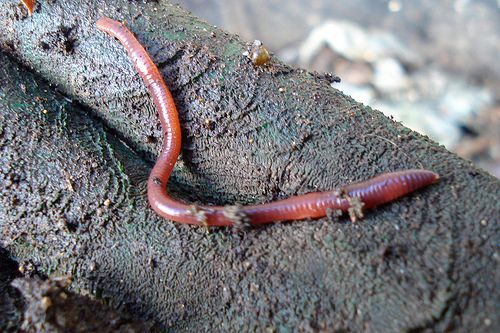Comprehensive Lawn Care Products from Red Wiggler Express
Comprehensive Lawn Care Products from Red Wiggler Express
Blog Article
Open the Keys of Red Wigglers: Your Overview to Composting Success
The assimilation of red wigglers into composting practices offers a considerable opportunity for boosting soil health and wellness and promoting sustainability. Recognizing their requirements and behaviors is critical for enhancing their potential, from establishing up a proper worm bin to feeding them the ideal materials.

What Are Red Wigglers?
(Red Wiggler Express)Red wigglers, scientifically called Eisenia fetida, are a types of earthworm primarily made use of in composting because of their remarkable capacity to break down raw material efficiently. These worms are identified by their reddish-brown coloration and a fractional body, usually measuring between 3 to 4 inches in size. Unlike other earthworm varieties, red wigglers flourish in abundant, organic settings, making them perfect for vermicomposting systems.
Indigenous to North America, they are usually discovered in decomposing leaves and compost heap, where they play a critical role in nutrient recycling. Their adjustment to living in a damp, cardio environment allows them to eat large quantities of natural waste, simplifying into nutrient-rich spreadings that boost soil health and wellness.
Red wigglers reproduce quickly, with a solitary worm efficient in producing a number of cocoons weekly, each containing several hatchlings. This quick recreation rate contributes to their performance in composting procedures. They prefer temperatures in between 60 ° F and 80 ° F, and their task degree increases significantly within this variety, further assisting in the disintegration procedure. Comprehending the biology and habits of red wigglers is essential for maximizing their capacity in composting applications.
Advantages of Making Use Of Red Wigglers
Using the power of red wigglers in composting offers numerous benefits that enhance soil health and advertise lasting waste monitoring. These impressive microorganisms successfully damage down raw material, transforming kitchen scraps and yard waste into nutrient-rich vermicompost. This ended up item is incredibly valuable for plant development, as it enhances soil structure, increases dampness retention, and boosts nutrition schedule.

(Red Wiggler Express)In addition, the existence of red wigglers in your composting system can accelerate the composting procedure, creating top quality garden compost in a fraction of the moment contrasted to traditional approaches. The castings produced by these worms are likewise including beneficial microbes that even more improve the soil ecosystem.
Establishing Your Worm Bin
Creating an efficient worm container is a straightforward process that can dramatically enhance your composting efforts. Worm containers can be made from plastic storage space bins, wooden boxes, or readily readily available worm bins.
Next, prepare the bed linen product, which offers as the worms' habitat. A mix of shredded newspaper, cardboard, and coconut coir functions well, providing a comfy setting for the worms.

Feeding Your Red Wigglers
To guarantee the health and performance of your red wigglers, it is necessary to offer them with a balanced diet regimen that meets their dietary requirements. Red wigglers thrive on a varied range of natural products, which not only provide necessary nutrients yet also advertise effective composting.
Beginning by integrating kitchen scraps such as veggie my sources peels, fruit cores, and coffee premises. Prevent citrus fruits, onions, and garlic, as these can be detrimental to worm health and wellness. Additionally, present shredded paper, cardboard, and dry leaves to develop a well-aerated atmosphere.
Feeding regularity ought to be checked; generally, worms can take in half their body weight in food weekly. It is crucial to prevent overfeeding, as excess food can lead to unpleasant smells and attract bugs. An excellent practice is to include food in percentages, enabling worms to refine it before introducing extra.
Maintaining wetness degrees is also important; the bed linen needs to perspire however not soaked. Lastly, make certain to on a regular basis check the temperature and pH levels of the container to make certain an optimal environment for your red wigglers, eventually boosting their composting performance.
Harvesting and Making Use Of Garden Compost
An effective composting procedure with red wigglers culminates in the rich, dark compost recognized as vermicompost, which can dramatically boost soil health and wellness and plant growth. Collecting this nutrient-dense product commonly takes place every three to six months, depending upon the dimension of your system and the quantity of organic matter being processed.
To collect, gently separate the garden compost from the worms and any kind of undecomposed products. One efficient technique involves moving the contents of the container to one side and including fresh bed linens and food to the vacant area, encouraging the worms to move. After a few days, the compost can be accumulated from the opposite side.
It is important to utilize vermicompost appropriately to maximize its advantages. It can be utilized as a top clothing for garden beds, combined into potting dirt, or brewed right into a nutrient-rich liquid plant food called "worm tea." This application method aids to deliver crucial nutrients directly to plant origins, promoting much healthier growth. By including vermicompost into your horticulture regimen, you not just reuse organic waste however also produce a thriving environment that supports sustainable horticulture practices.
Verdict
In summary, red wigglers serve as phenomenal allies in composting efforts, transforming natural waste right into nutrient-rich vermicompost (Red Wiggler Express). Their unique biological attributes and reliable waste processing capabilities contribute substantially to lasting horticulture practices. By comprehending the ideal problems for their environment, feeding needs, and compost harvesting techniques, gardeners can improve soil health and wellness and advertise plant vigor. Welcoming vermicomposting not just reduces landfill waste but likewise promotes a much more ecologically liable strategy to horticulture and source monitoring.
Report this page